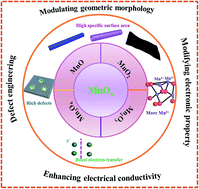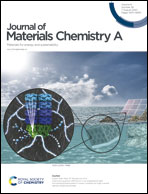Advances in manganese-based oxides for oxygen evolution reaction
Abstract
Hydrogen production by water electrolysis, characterized by sufficient sources of raw materials, cost-effectiveness, and environment-friendly merits, has attracted increasing attention. Nevertheless, the inherent high reaction energy barrier and four-electron mechanism of anodic oxygen evolution reaction (OER) result in higher reaction overpotential, slower reaction rate, and more power consumption, affording low hydrogen evolution efficiency in the cathodic half reaction. This considerably limits practical applications. Manganese-based oxides (MnOx) show great promise for driving OER due to their worthwhile intrinsic properties, such as well-controlled morphology, structure, and electronic state. Moreover, a large number of unsaturated edge sites on the surface of MnOx can not only improve the active area to increase the number of active sites, but they also help adsorb OH− in alkaline solutions, thereby facilitating oxygen production. From this perspective, we review the emerging applications of a series of MnOx materials as highly efficient electrocatalysts for OER. By highlighting the reaction mechanisms, superiorities, and challenges of each type of MnOx, we hope to provide guidance for constructing more efficient MnOx electrocatalysts and reveal the bright future for future applications in the highly exciting energy-conversion-related areas.



 Please wait while we load your content...
Please wait while we load your content...